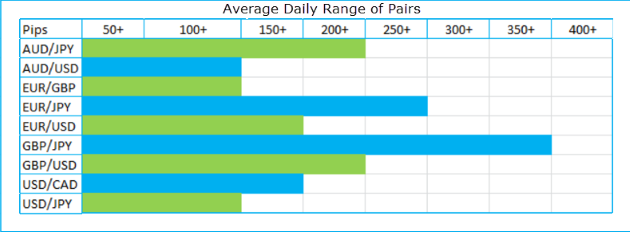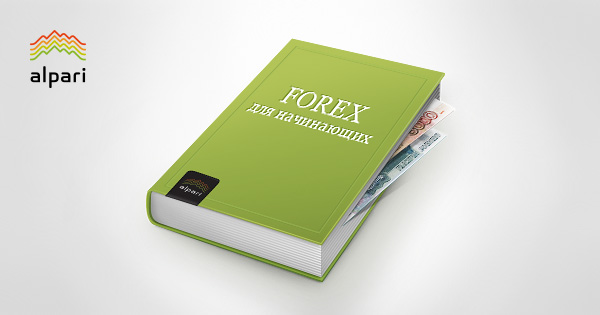The concept of pips is very important in trading in order to understand how exchange rates move, how to calculate the profit or loss on a position, and how to manage risk effectively. However, many traders still lack a deep understanding of pips in trading and risk management, which puts a large burden on their trading performance. In light of this, we’ve provided a detailed guide on what pips are in Forex trading, how to calculate their value, what pipettes are, and much more.
What is a pip in Forex?
Let’s first define what a pip is in Forex. A pip in Forex represents the smallest increment by which the value of a currency pair can change. For most major currency pairs, except those involving the Japanese yen, a pip is usually the fourth decimal place of an exchange rate. For example, if the exchange rate of the EURUSD (euro vs. US dollar) pair rises from 1.2050 to 1.2065, this move would represent a change of 15 pips. Similarly, a drop in the exchange rate from 1.2050 to 1.2025 represents a change of 25 pips.

Currency pairs that involve the Japanese yen have a slightly different definition of pips. Namely, a pip in these pairs is located at the second decimal place, since they are usually quoted with an exchange rate of 10 or higher. Let’s take USDJPY for example. If the pair is trading at 110.40 and rises to 110.90, this would represent a 50-pip rise of the US dollar against the Japanese yen. Similarly, a fall from 110.40 to 110.05 represents a fall of 35 pips.
Now that you know what pips are in Forex trading, let’s dig a little deeper and cover them in more detail.
Forex pips explained: What is a pipette?
A pipette represents the fractional of a pip, and has a value of 1/10 of a pip. In other words, pipettes are the fifth decimal place in an exchange rate for pairs that don’t involve the Japanese yen, and the third decimal place in an exchange rate for pairs that do involve the Japanese yen.

The importance of pipettes is in the spreads offered by brokers. Many brokers quote their spreads (the difference between the buying and selling prices) using exchange rates with five decimal places, meaning spreads are usually expressed using pipettes. For example, the spread on a major pair like EURUSD can be 0.7 pips or 7 pipettes, while cross pairs like AUDCAD can have a spread of 2.2 pips or 2 pips and 2 pipettes. It’s worth noting that many brokers use exchange rates with five decimal places in their trading platforms, which makes it important to be able to distinguish pips from pipettes early on in the learning process.
Volatility of Forex pairs
Understanding pips in Forex is a prerequisite to learning more complicated concepts in trading. One of these is the volatility of Forex pairs, which is often expressed in the number of pips that a pair moves during a day. Cross pairs usually have larger pip movements than major pairs over the course of a day, which can be ascribed to relatively low liquidity.

Liquidity plays an important role in the pip-volatility of pairs, since a smaller number of buyers and sellers at any given price usually have a positive effect on volatility. That’s why exotic pairs, such as ones including the Mexican peso or Turkish lira, can easily move hundreds, even thousands of pips in a single day.
Forex traders need to embrace volatile pairs, since volatility is what creates trading opportunities over and over again. Naturally, we also have to protect ourselves using risk management rules, and it begins with learning what a pip is on the Forex market.
How much is a pip in Forex worth?
The interesting part about pips for many Forex traders is calculating the value of a single pip. We need to know how to calculate the value of a pip in order to calculate the total profit or loss of our trade. There are a few factors that can influence the current pip-value, such as the currencies in the pair, the position size, and the current exchange rate. By knowing what a pip is, you’ll be able to calculate the profit/loss of your trade.
The effect of different position sizes on the value of a single pip is shown in the following table.

By using the following two formulas, you can easily calculate how much profit or loss your position has generated with great precision.
Total profit/loss = Value of pip x Amount of pips
Value of pip = (0.0001 / Exchange rate) * Position size
Let’s say you trade a standard lot of GBPUSD and bought the pair at 1.3250. You decide to close the position at 1.3290, giving you a profit of 40 pips. To calculate the profit you’ve made on the trade, we first need to determine the value of a single pip in the currency pair.
Value of pip = (0.0001 / 1.3290) * 100,000 = 7.52 GBP
Know that we know how much a single pip is worth, let’s calculate the total profit of our trade:
Total profit = 40 pips x 7.52 GBP = 300.80 GBP
Calculating position size
Having covered what a pip is in Forex and how to calculate its value, it’s time to see how pips can be used in risk management to determine the perfect position size for your trade. To do so, we need to follow a few simple steps:
Step 1: Determine your risk per trade – The risk per trade refers to the total risk you’re willing to take on a single trade. Usually, this is expressed as a percentage of your trading account balance. As a rule of thumb, don’t risk more than 2% of your balance on any single trade. For example, if your trading account balance is 10,000 USD, your total risk per trade shouldn’t exceed 200 USD.
Step 2: Place your Stop Loss – After you’ve found a good trade setup, check for potential areas where you can place your Stop Loss level and express it in pips. For example, if your potential entry price on a EURUSD trade is 1.2060 and your Stop Loss is placed at 1.2020, this would represent a Stop Loss of 40 pips.
Step 3: Calculate your position size – Finally, we have all ingredients we need to calculate our position size. By knowing that your total risk per trade is 200 USD, and your Stop Loss is 40 pips, you can determine your ideal position size by dividing your risk per trade with your Stop Loss. In our example, we should take a position size of 200/40 = 5 USD per pip. This would be roughly equal to 0.5 lots, but if you want to calculate it more precisely, use the following formula (the value “DesiredPipValue” would be replaced with 5 USD): PositionSize=DesiredPipValue*ExchRate/0.0001
How do I calculate profits and losses with pips?
Learning what a pip is in Forex terms is best done through a few examples. In the following lines, we’ll calculate the total value of profits/losses on various currency pairs.
Example 1: A trade of 2 standard lots on EURUSD is closed at 1.1550 with a 70-pip profit. What is the total profit of the trade?
Pip value = (0.0001 / 1.1550) x 200,000 = 17.31 EUR
70 pips x 17.31 EUR = 1,212 EUR in profit
Example 2: A trade of 50,000 USD on the USDJPY pair is closed at 110.65 with a loss of 60 pips. What is the total loss of the trade?
Pip value = (0.01 / 110.65) x 50,000 = 4.52 USD
60 pips x 4.52 = 271.12 USD in loss
Note that JPY pairs have two decimal places, and the pip is the second decimal place in this case.
Conclusion
In this article, we gave a definition of pips in Forex trading and showed how it can be applied to calculate your total profit or loss on a trade, or your perfect position size. To conclude, pips are the smallest increment by which a currency pair can change in value, and usually represents the fourth decimal place in currency pairs that don’t involve the Japanese yen. Currency pairs that do involve the Japanese yen have the pip located at the second decimal place.
Pipettes are a fractional value of a pip, and have a value of 1/10 of a regular pip. Many brokers use trading platforms with 5 decimal places instead of 4, making it important to understand the meaning of pips in Forex trading and how they differ from pipettes.
Finally, knowing the Stop Loss of a trade setup helps in determining the perfect position size for that trade in order to stay inside your risk per trade boundaries.
Now that you’ve learned what a pip stands for in Forex, you can move on to cover more complicated trading concepts and rest assured that you have a solid basis to calculate your total profits/losses on a trade.
